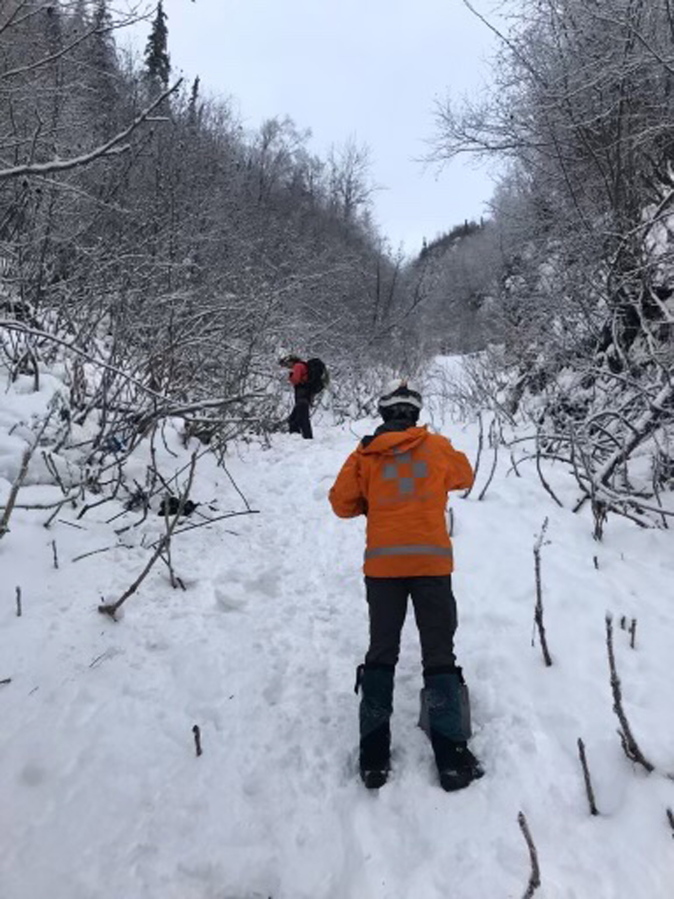SEATTLE — When a massive sheet of snow careens down the side of a mountain, survival comes down to luck. Avalanches kill people in Washington’s backcountry every year; they’re “very powerful and destructive and you really do not want to get caught in an avalanche,” says Scott Schell, executive director of the Northwest Avalanche Center (NWAC), which provides avalanche and mountain weather forecasts for the Northwest. “They can be quite lethal.”
But instead of fretting about what you’d do in this scenario, it’s a better idea to avoid it altogether. “Preventing being caught in an avalanche is … the mindset that you need to embody,” Schell says.
Because once an avalanche starts, your chance to mitigate the risk is largely over. If you’re skiing in the backcountry and trigger an avalanche, extraction can be difficult, says Schell, because “you’re usually not right by the parking lot” and “once you’re caught in moving snow, there’s not much left that you can do.” The most important thing to do is alert the people you’re with; having “a last-seen point” can aid in the ensuing rescue. You should also get rid of your poles if you have poles on, and try to get off the moving snow, but “outside of that, the rest is left to luck.”
There are a number of strategies to avoid getting caught up in an avalanche.
For starters, don’t cause one. In “the vast majority of avalanches,” Schell says, “the person or someone in the person’s party is responsible for triggering the avalanche.”
“It’s easy to assume an act of God,” he says, but it’s actually very rare for an unsuspecting person to simply get buried by snow on a state highway corridor or at an established ski area. How rare? You’re more likely to be struck by lightning. Schell estimates that these surprise disasters make up about 1 percent of avalanche events.
The others are caused by people, often skiers and snowmobilers who enter steeper, avalanche-prone terrain. According to NWAC’s data, most fatalities from avalanches involve backcountry tourers, climbers, hikers and snowmobilers.
But if the real avalanche risk comes from backcountry enthusiasts, that’s also where solutions can be found. If you’re planning to go into the backcountry in winter, you can mitigate some avalanche risk with the right preparation. “Our tack is to equip people with the forecast and associated tools to make better decisions to avoid avalanches,” Schell says.
Here are a few keys to surviving an avalanche:
• Get the gear. Invest in avalanche safety gear: an avalanche shovel for rescuing submerged victims, and an avalanche probe and transceiver to help locate them — take these with you into the backcountry, along with the 10 Essentials. But before doing that, you’ll need to know how to use these tools.
• Get the training. Take a field-based avalanche class. This will help you identify avalanche terrain so you can avoid it. For those who may be “backcountry-curious” but aren’t committed to the experiential options yet, NWAC offers a free entry-level avalanche awareness course that goes over the basics in 90 minutes. Schell recommends following this up with a field course if you end up graduating from backcountry-curious to backcountry-bound. To get a sense of what concepts you’ll be learning, you can go through NWAC’s Backcountry Basics, a six-module online educational tool that maps out some of the components of avalanche forecasting, risk assessment and red flags to watch for in avalanche terrain.
• Get the forecast. NWAC issues avalanche and mountain weather forecasts every day. Check them out before you leave. Once you’ve taken a field-based avalanche course, you’ll know more about how to apply the forecast to the terrain you’re heading into.
• You don’t have to go into the backcountry. “You can’t get caught in an avalanche if you’re not in avalanche terrain,” Schell says. To minimize avalanche risk even more, skiers can avoid the backcountry altogether and stick to operational, established ski areas, which have dedicated ski patrols monitoring avalanche danger during the ski season. Snowshoers can avoid avalanche terrain, too, by sticking to set trails, often found at Nordic ski areas.
The risk avalanches pose is real, and can be frightening. About 30 people are killed by avalanches in the United States every year; in the region encompassing Mount Hood and Washington’s mountain ranges, Schell estimates, that number has a 10-year rolling average of 2.9.
Death is just one possible risk, Schell says. There’s little data on how many people are severely injured in avalanches, but he estimates that the number of people who end up with “life-changing injuries” from avalanches is likely several times that of avalanche casualties, and “countless more people … were caught and carried and in essence got very lucky.”



